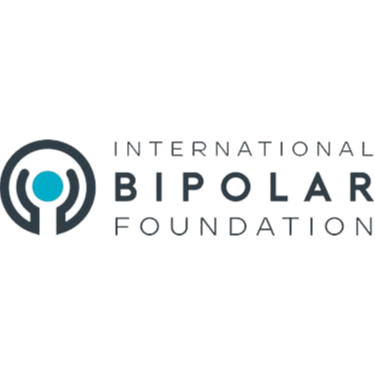Beyond off the shelf ideas like going to office hours, using a calendar/planner, asking for help, using their accommodations, students need a structure that will empower them to better organize themselves around the deficits that accompanied them to college and to experience struggle (and even occasional failure) as an integral and useful part of the learning process.
YOU MIGHT ALSO LIKE
CLEAR ALL
BY TEACHER
BY TYPE
FILTER

TOPIC
- Identity (21)
- Relationship Challenges (21)
- Emotional and Mental Health (20)
- Learning Styles (17)
- Transitions (17)
- Parenting (16)
- Synesthesia (16)
- BIPOC Well-Being (14)
- Anxiety (13)
- Communication Skills (13)
- Romantic Relationships (13)
- Child’s Autism (12)
- Self-Discovery (12)
- Disabled Well-Being (11)
- Growth Mindset (11)
- Work Challenges (10)
- Academic Struggles (9)
- Belonging (9)
- Depression (9)
- Imagination and Creativity (9)
- Relationship with Time (9)
- Self-Pressure (9)
- Child’s ADD/ADHD (8)
- Creative Well-Being (8)
- Failure (8)
- Friendship (8)
- Happiness (8)
- Self-Worth (8)
- Access to Education (7)
- Black Well-Being (7)
- Connection (7)
- Focus (7)
- Habits of Mind (7)
- Highly Sensitive People (7)
- Identity Shifts (7)
- Imposter Syndrome (7)
- Racism (7)
- Search for Purpose (7)
- Fellowship and Community (6)
- Self-Acceptance (6)
- Self-Esteem (6)
- Transgender Well-Being (6)
- Burnout (5)
- Discrimination (5)
- Finding Meaning (5)
- LGBTQIA Well-Being (5)
- Motivation (5)
- Racial Identity (5)
- Resilience (5)
- Self-Care (5)
- Women’s Well-Being (5)
- Asking for Help (4)
- Children’s Well-Being (4)
- Connection with Nature (4)
- Household Labor (4)
- Intimacy (4)
- Neuroscience (4)
- Nonbinary Well-Being (4)
- Social Responsibility (4)
- Work-Life Balance (4)
- Activism/Service (3)
- Aging (3)
- Athlete Well-Being (3)
- Authenticity (3)
- Child’s Challenging Behavior (3)
- Community Healing (3)
- Compassion (3)
- Confidence (3)
- Cross-Cultural Dynamics (3)
- Decision Making (3)
- Emotional Intelligence (EQ) (3)
- Gratitude (3)
- Honoring Emotion (3)
- Life Challenges (3)
- Living as an Empath (3)
- Mental Health Challenges (3)
- Mindfulness (3)
- Mindfulness Meditation (3)
- Perception (3)
- Personal Development (3)
- Physical Health (3)
- Pleasing Parents (3)
- Productivity (3)
- Racial Discrimination (3)
- Retirement (3)
- Self-Expression (3)
- Self-Limiting Beliefs (3)
- Sex (3)
- Shame (3)
- Social Justice (3)
- Social Presence (3)
- Speaking Your Truth (3)
- Stress (3)
- Stress Management (3)
- Unconscious Bias (3)
- Values (3)
- Veteran Well-Being (3)
- Child Defiance (2)
- Chronic Anxiety (2)
- Climate Change (2)
- Collaboration (2)
- Competition (2)
- Curiosity (2)
- Death or Loss of a Loved One (2)
- Diet and Nutrition (2)
- Digital Life (2)
- Empathy (2)
- Empowerment (2)
- Exercise (2)
- Family Acceptance (2)
- Family Dynamics (2)
- Forgiveness (2)
- Generosity (2)
- Healthy Eating (2)
- Immigration and Assimilation (2)
- Intention (2)
- Kindness (2)
- Latinx Well-Being (2)
- Leadership (2)
- Letting Go (2)
- Loneliness (2)
- Marriage (2)
- Meditation (2)
- Military to Civilian Re-entry (2)
- Neuroplasticity (2)
- New Relationships (2)
- Offering Support to Others (2)
- Othering (2)
- Peak Performance (2)
- Performance Anxiety (2)
- Personality Typing (2)
- Positive Thinking (2)
- Problem Solving (2)
- Racial Justice (2)
- Relationship with Money (2)
- Self-Actualization (2)
- Self-Compassion (2)
- Self-Healing (2)
- Self-Mastery (2)
- Self-Reliance (2)
- Setting Limits and Boundaries (2)
- Sleep (2)
- Spiritual Growth (2)
- Talk Therapy (2)
- Time Management (2)
- Trauma (2)
- Whiteness (2)
- AAPI Well-Being (1)
- Acceptance (1)
- Adaptability (1)
- Addiction (1)
- Boundary Confusion (1)
- Building Culture (1)
- Caregiver Well-Being (1)
- Challenges with Teens (1)
- Child Depression (1)
- Child’s Anxiety (1)
- Child’s Emotional Growth (1)
- Coming Out (1)
- Compassion Meditation (1)
- Consciousness (1)
- Criticism and Rejection (1)
- Cross-Cultural Parenting (1)
- Disconnection (1)
- Divorce and Breakup (1)
- Eating Disorders (1)
- Entrepreneurship (1)
- Female Friendship (1)
- Forest Bathing (1)
- Gender Discrimination (1)
- Gender Identity (1)
- Gender Justice (1)
- Goal Setting (1)
- Grief (1)
- Handling a Loved One’s Illness (1)
- Hero’s Journey (1)
- Homophobia (1)
- Illness and Injury (1)
- Indigenous Well-Being (1)
- Inner Peace (1)
- Inspiration (1)
- Integrative Medicine (1)
- Intuition (1)
- Job Loss (1)
- Journaling (1)
- Laughter Therapy (1)
- LGBTQIA Relationships (1)
- Longevity (1)
- Loss of Partner/Spouse (1)
- Lovingkindness Meditation (1)
- Memoir (1)
- Memory (1)
- Men’s Well-Being (1)
- Mind-Body Connection (1)
- Misophonia (1)
- Motherhood (1)
- Myers-Briggs Type Indicator (1)
- Neuropsychology (1)
- OCD (1)
- Optimism (1)
- Patience (1)
- Performance Pressure (1)
- Positive Self-Talk (1)
- Presence (1)
- Psychology (1)
- PTSD (1)
- Racial Healing (1)
- Rest (1)
- Self-Development (1)
- Self-Realization (1)
- Sexual Assault or Abuse (1)
- Shadow (1)
- Social Anxiety (1)
- Social Psychology (1)
- Soul Mission (1)
- Spirituality and Health (1)
- Storytelling (1)
- Suicide (1)
- Trust (1)
- Unfulfilled Career (1)
- Wake-Up Calls (1)
- Youth Activism (1)








